Carved in Time: The Belur Halebidu Sculptures
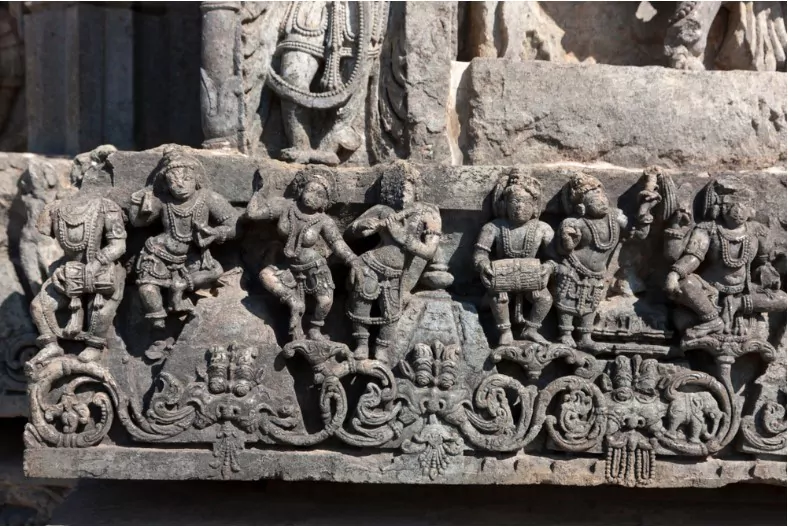
India, a land of diverse cultures, traditions, and architectural marvels, has always been an enigma for travellers and historians alike. Among its many wonders, the Belur Halebidu sculptures stand out as a remarkable testament to the country’s rich heritage. Located in the southern state of Karnataka, the Belur Halebidu temple complex is home to some of the most intricate sculptures and architectural masterpieces of the Hoysala dynasty.
- An Overview of the Belur Halebidu Temple Complex
- Belur Temple Architecture: A Melange of Beauty and Devotion
- The Intricate Belur Halebidu Sculptures: Narratives in Stone
- Artistic Significance of Belur Halebidu Sculptures
- Materials and Techniques
- Conservation and Recognition
- Visit and Experience
- The Halebidu Difference
- Wrapping Up
1 An Overview of the Belur Halebidu Temple Complex
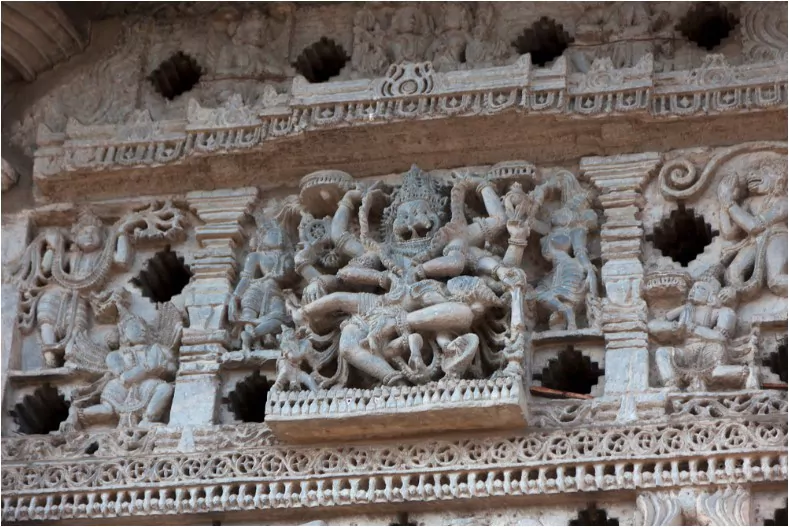
Before embarking on the artistic journey, it’s vital to grasp the historical essence of Belur and Halebidu. These towns were once the epicentres of the mighty Hoysala Empire, ruling parts of southern India between the 10th and 14th centuries. The empire’s grandeur is significantly reflected in the “Belur Halebidu temple” complexes, making them significant archaeological and tourism sites today. The temples were dedicated to various Hindu deities, with the primary temple in Belur dedicated to Lord Vishnu.
2 Belur Temple Architecture: A Melange of Beauty and Devotion
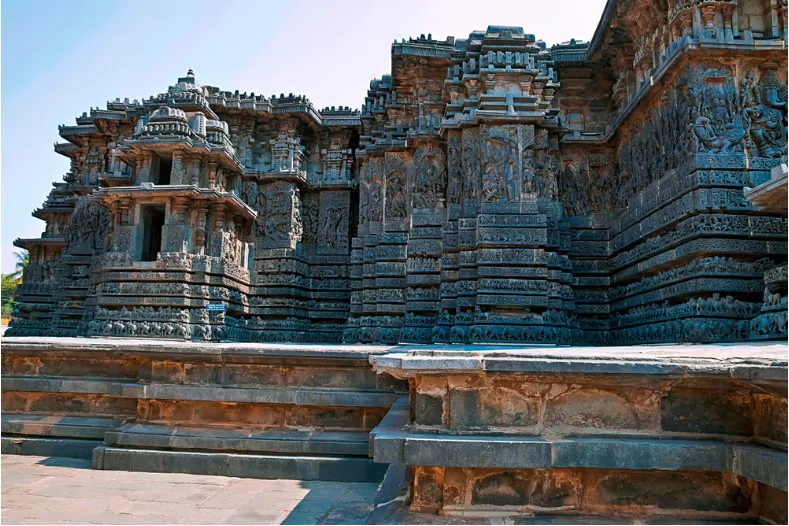
The unique nature of Belur temple architecture sets it apart. Unlike many temples of the time, the structure is not colossal in its height. Instead, the architects focused on intricate detailing, making every inch of the temple a visual treat. The soapstone used for construction allows for delicate carvings, which have stood the test of time and remain almost as pristine as they were hundreds of years ago.
As you approach the temple, the first thing you’ll notice is the grand entrance or the ‘mahadwara’. The entrance itself is adorned with sculptures of fierce-looking ‘dwarapalakas’ (gatekeepers). The temple stands on a platform, which is known as the ‘jagati.’ This not only elevates the structure but also serves as a pradakshina patha, a circumambulatory path around the temple.
One of the most striking features of the Belur temple architecture is its horizontal treatment. The walls are divided into horizontal panels, each showcasing different aspects of life, from elephants to mythological narratives. This structured design ensures that there’s a clear demarcation between the divine and the mundane.
The Chennakeshava temple, the main temple at Belur, is an architectural marvel. It is one of the finest examples of Hoysala architecture. The base of the temple called the adhishthana, is adorned with friezes of elephants, lions, horse riders, and mythological narratives. These aren’t just mere decorations but are symbolic and narrate various legends and tales from Indian scriptures.
The intricacy of Belur temple architecture is such that every inch of the temple seems to be carved with meticulous detailing. The walls of the temple are studded with numerous sculptures of gods, goddesses, dancers, and musicians. Not to be missed are the salabhanjikas or madanikas – celestial nymphs showcasing various moods and poses.
3 The Intricate Belur Halebidu Sculptures: Narratives in Stone
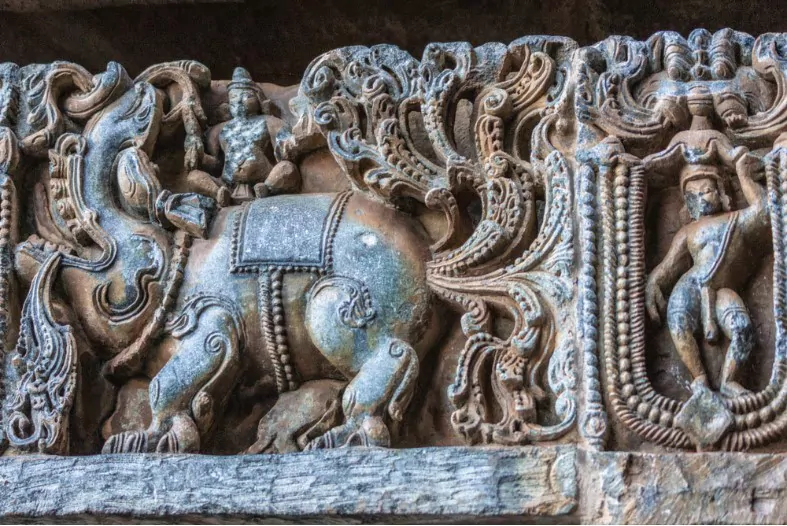
When we talk about the Belur Halebidu sculptures, it’s almost like diving into a world where the stone comes to life. These aren’t just carvings; they are stories, legends, and intricate depictions of life from that era.
- Elephant Carvings: The base of the temple walls is dominated by rows of elephants. These aren’t just decorative elements. Each elephant is distinct, showcasing various postures and activities, symbolising strength and stability.
- Lion Motifs: Above the elephants, you’ll often find lions, which are symbols of courage.
- Epics and Legends: The panels also showcase scenes from Hindu epics like the Ramayana and the Mahabharata. There are tales of valour, love, and devotion depicted with such finesse that you can almost feel the emotions emanating from the sculptures.
- Daily Life: Not all Belur Halebidu sculptures are about deities or legends. Many panels showcase daily life, from dancing and music to scenes of warfare.
- Ceiling Carvings: Don’t forget to look up when you’re inside the temple. The ceilings are as intricately carved as the walls. The most famous is the Narasimha carving on the ceiling, showing the deity in a dynamic pose, bursting out of a pillar.
4 Artistic Significance of Belur Halebidu Sculptures
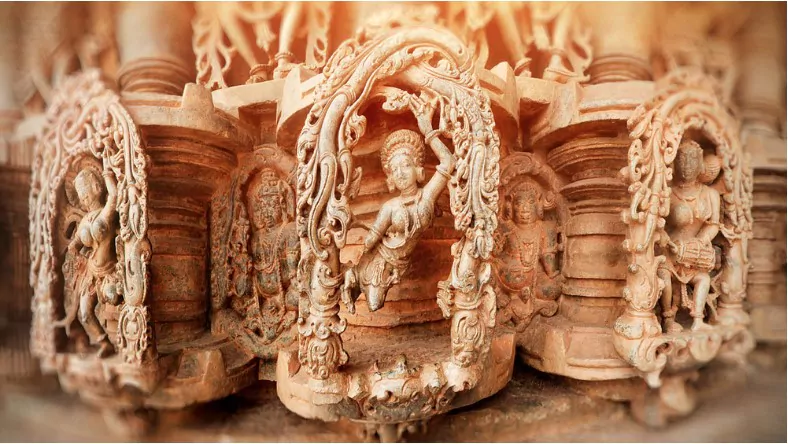
The sculptures are not merely decorative; they hold deeper meanings and insights into the socio-cultural milieu of the era. The sheer detailing on each Belur Halebidu sculpture, be it the bangles on a dancer’s arm, the tautness of an archer’s bow, or the expressions on a warrior’s face, exemplifies the artists’ dedication and the society’s reverence for perfection.
Furthermore, the positioning of the sculptures also plays a symbolic role. For instance, the elephants at the base of the temples symbolise strength and stability, while the lions above them represent courage.
5 Materials and Techniques
The Belur Halebidu sculptures are primarily crafted from a unique kind of soapstone. This stone is soft and malleable when freshly quarried but hardens upon exposure, making it perfect for carving intricate designs and ensuring their longevity. The sculptors of the era were true maestros, often visualising and chiselling directly without preliminary sketches.
6 Conservation and Recognition
Owing to their immense historical and artistic significance, efforts have been made to conserve and maintain the Belur Halebidu temple complexes. They have been recognized by UNESCO as World Heritage Sites, further emphasising their universal value.
7 Visit and Experience
For art enthusiasts, historians, and travellers, a visit to the Belur and Halebidu temples is a journey back in time. One gets to immerse in the art and ethos of an era gone by. The shadow play of light and darkness within the temple, the silent stories whispered by each Belur Halebidu sculpture, and the aura of devotion make it an unforgettable experience.
8 The Halebidu Difference
While Belur is a marvel in itself, Halebidu brings a different charm. The temple here, dedicated to Lord Shiva, faced invasions and damage. However, the remains tell a tale of unmatched craftsmanship. The exteriors are adorned with countless carvings of gods, goddesses, dancers, and mythical beasts. The Nandi statues, associated with Lord Shiva, are a massive attraction, capturing the deity’s mount in all its grandeur.
9 Wrapping Up
The Belur Halebidu sculptures are more than just an architectural wonder; they are a journey through time, a testament to the skill, devotion, and artistic sensibilities of the Hoysala artisans. These temples serve as a reminder of India’s rich cultural heritage and the timeless nature of art.
Visiting the Belur Halebidu temple complex is akin to stepping into a living museum. Every carving, every sculpture tells a story, waiting for an eager audience to listen. So, whether you’re an architecture enthusiast, a history buff, or someone looking for spiritual solace, the Belur Halebidu temples promise a unique experience that will stay with you long after you’ve left their sacred grounds.
Community Q&A
About This Article
This article has been viewed 414 times.



